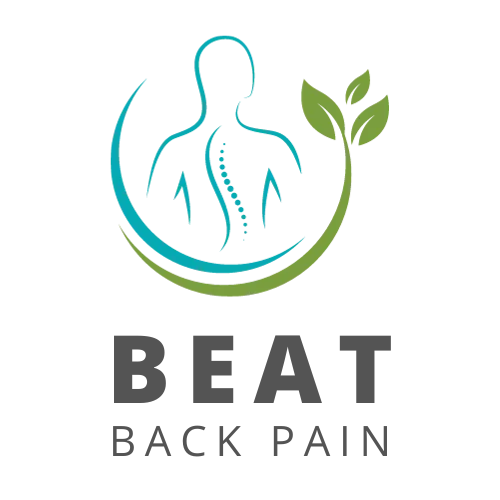Discover Proven Strategies for Easing Back Pain and Improving Spinal Health.
Transform Your Life: Say Goodbye to Back Pain Forever!
Unlock Your Path to Spinal Health: Book Your Free Online Consultation Today!
ABOUT ME
I am thrilled to welcome you to our website, designed as a comprehensive resource for anyone struggling with back pain. My goal with this platform is to extend the reach of my expertise beyond the confines of my practice, providing accessible and effective solutions to a wider audience.
This website serves as a hub for knowledge, guidance, and support, offering an array of resources from free educational content to in-depth online coaching programs. It's my mission to make spinal health and pain-free living achievable for all, no matter where you are on your journey towards wellness.
In my decades of experience, I've seen firsthand the transformative impact that the right guidance can have on an person's life. Through this website, I aim to replicate that success on a larger scale. My hope for each of our clients is to empower them with the knowledge, skills, and confidence needed to take control of their back pain and spinal health.
Whether it's through our course, personalised online consultations, or comprehensive coaching programs, I am dedicated to helping our clients achieve lasting pain relief, enhanced flexibility, and a stronger, more resilient back, ultimately leading to a healthier, more active lifestyle.


Dr. Peter Bennett BSc DC
Experienced Chiropractor & Renowned Back Pain Expert
With over 30 years of dedicated service in the field of chiropractic care and back pain management, Dr. Peter Bennett has established himself as a leading expert and a trusted health coach. His journey began with a deep passion for understanding the complexities of spinal health and a commitment to holistic wellness.
Dr. Bennett's approach goes beyond traditional chiropractic methods. He integrates the latest research and techniques in spinal health, offering personalised treatment plans that cater to the unique needs of each individual. Over his extensive career, Dr. Bennett has helped thousands of people reclaim their lives from debilitating back pain, guiding them toward improved flexibility, strength, and overall spinal resilience.
His expertise is not just in treating pain but in empowering his patients to lead healthier, more active lives. Dr. Bennett believes in the transformative power of preventive care and patient education, ensuring that every person he works with gains the knowledge and tools necessary to maintain their spinal health.
As a health coach, Dr. Bennett's philosophy centres on a holistic view of health – addressing physical, emotional, and lifestyle factors to achieve optimal wellness. His empathetic and comprehensive care has earned him a reputation as a compassionate healer and a true advocate
Advantages
Online spinal therapy offers a blend of convenience, accessibility, and personalised care, making it an appealing option for many seeking relief from back pain and spinal issues.
Convenience: Access treatment from the comfort of your own home, eliminating the need for travel to a clinic or therapy centre.
Flexibility in Scheduling: Online therapy sessions can be scheduled at times that are most convenient for you, accommodating your personal and professional commitments.
Reduced Costs: Save on transportation and related expenses often associated with in-person therapy visits.
Continuous Support: Benefit from ongoing support through digital communication tools, providing more consistent contact with your therapist.
Access to Digital Resources: Use online tools, videos, and educational materials that can enhance your therapy experience.
Safe for High-Risk Individuals: Especially beneficial for those with compromised health or mobility issues, reducing the risk of exposure to illnesses like COVID-19.

Spinal Stenosis: Why the T12/L1 Junction May Be the Missing Link in Your Pain Relief
For many of my older clients struggling with spinal stenosis, their story is all too familiar: chronic back pain, tingling or numbness in the legs, and difficulty standing or walking for long periods. It’s an often slow, frustrating process that leaves people feeling trapped in their own bodies. Most sufferers believe their degenerating spine is the primary culprit—but what if the real key to relief lies in a surprisingly overlooked area? Let’s talk about the T12/L1 junction and why restoring gentle mobility here could be the game-changer your body has been waiting for.
Spinal Stenosis: A Quick Overview
First, let’s get on the same page about spinal stenosis. This condition occurs when the spaces within your spine narrow, compressing nerves that travel through the spinal canal. It often affects the lower back (lumbar stenosis) and is frequently associated with aging, as bone spurs, thickened ligaments, or disc degeneration progressively limit space around the nerves. Classic symptoms include lower back pain, leg weakness, and “neurogenic claudication” (pain or discomfort when walking that improves when sitting or leaning forward). Conventional advice ranges from physical therapy and anti-inflammatory medications to, in severe cases, surgery.
But here’s where I challenge conventional wisdom: many treatment approaches focus too much on the lower lumbar vertebrae (L3-L5) while overlooking a pivotal biomechanical hub just above—T12/L1. This junction is the final link between your thoracic (mid-back) and lumbar (lower back) regions, and its mobility—or lack thereof—can play a massive role in spinal health.
The Hidden Importance of T12/L1 in Spinal Stenosis Relief
The thoracolumbar junction (where T12 meets L1) is unique because it’s a transitional zone between two regions with very different jobs. The thoracic spine is designed for stability, while the lumbar spine thrives on mobility and shock absorption. If T12/L1 becomes stiff or restricted, the body has to “borrow” mobility from elsewhere—often overloading the lower lumbar segments or the sacroiliac joints. This compensation can aggravate symptoms of spinal stenosis, especially when you’re standing or walking.
Think of it like a chain with one stiff link. If the area right above your lower back can’t move well, your L3-L5 vertebrae end up doing extra work. Over time, this imbalance leads to further compression, inflammation, and pain.
Many of my older clients come in assuming their pain is inevitable due to disc degeneration. But once we assess and restore gentle mobility in the T12/L1 junction, they often experience relief that they hadn’t found through conventional therapy alone.
The Best Exercise to Improve T12/L1 Mobility: The Seated Cat-Cow Stretch
If I could recommend just one exercise for spinal stenosis sufferers, it would be this gentle modification of the classic cat-cow stretch. Unlike the traditional version done on all fours, this seated variation is perfect for older individuals or anyone with limited mobility.
Here’s how to do it:
Find a stable chair and sit with your feet flat on the floor, about hip-width apart. Rest your hands on your thighs.
Start in a neutral position with your back straight and shoulders relaxed.
Inhale as you gently arch your back, lifting your chest and tilting your pelvis forward. Let your head tilt back slightly if comfortable, but don’t force it.
Exhale as you round your back, tucking your tailbone under and drawing your navel toward your spine. Let your head gently drop forward.
Move slowly and deliberately, flowing between arching and rounding for 6-8 slow repetitions.
This stretch encourages mobility through the thoracolumbar junction without placing excessive strain on the lower back. By creating a gentle “pumping” motion through the spine, it helps improve circulation to the compressed areas and encourages the nervous system to relax.
Why “Less Is More” When Working with T12/L1
One common mistake I see is the tendency to overdo mobility exercises in the hope of quick fixes. But with spinal stenosis, less is often more. The goal isn’t aggressive stretching or forcing range of motion—it’s about gradually “waking up” the area and allowing it to move more naturally.
Additionally, proper breathing plays a huge role in this process. Deep diaphragmatic breathing during mobility work helps reduce tension, improve spinal fluid flow, and calm overactive nerves. I encourage clients to exhale fully as they round their back during the cat-cow stretch, allowing their parasympathetic nervous system (the body’s “rest and digest” mode) to kick in.
Putting It All Together: A Holistic Approach
While improving T12/L1 mobility can be transformative, it’s not the whole story. Addressing spinal stenosis effectively requires a multifaceted approach:
Postural awareness: Improving posture while standing, sitting, and walking can reduce the mechanical stress on your spine.
Strengthening core muscles: A strong core reduces the burden on the lower back and helps stabilise the spine.
Gentle walking or aquatic therapy: Low-impact exercises can enhance circulation and reduce stiffness without overloading the spine.
Challenging the “Inevitable Degeneration” Narrative
One of the most disheartening messages I hear from clients is the belief that their pain is an inevitable part of aging. While spinal stenosis is common in older adults, that doesn’t mean you have to resign yourself to constant discomfort. The human body is remarkably resilient, and even small improvements in mobility and function can make a big difference.
By focusing on areas like T12/L1 and adopting gentle, consistent mobility practices, many people can regain a sense of control over their symptoms. The key is to work smarter, not harder—targeting the right areas instead of simply trying to “stretch out the lower back” in frustration.
Final Thought: Trust the Process
If you’re currently dealing with spinal stenosis, remember that relief isn’t about dramatic, overnight changes. It’s about steady, intentional progress that respects the body’s limitations while encouraging its natural ability to heal and adapt. And often, the smallest adjustments—like restoring motion at T12/L1—are the ones that can have the biggest impact on your quality of life.
Have you tried mobility exercises for your T12/L1 junction before? Or are you currently managing spinal stenosis and looking for new strategies? I’d love to hear your thoughts or experiences. Let’s start the conversation.§
Email:peter@yourspinalhealth.com
Site: www.beatbackpain.co.uk

